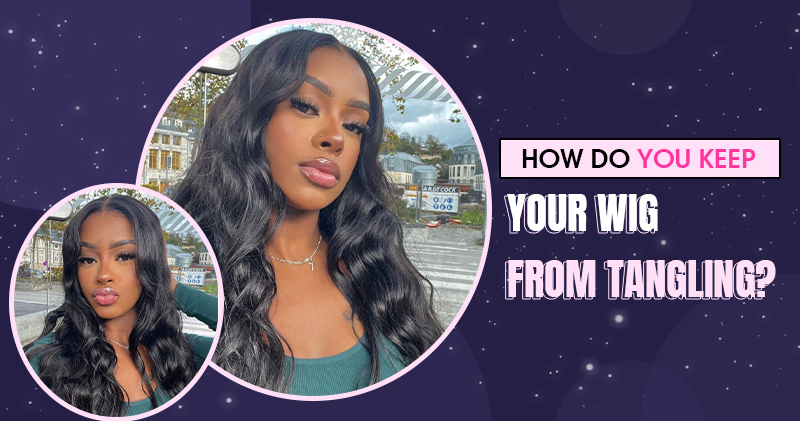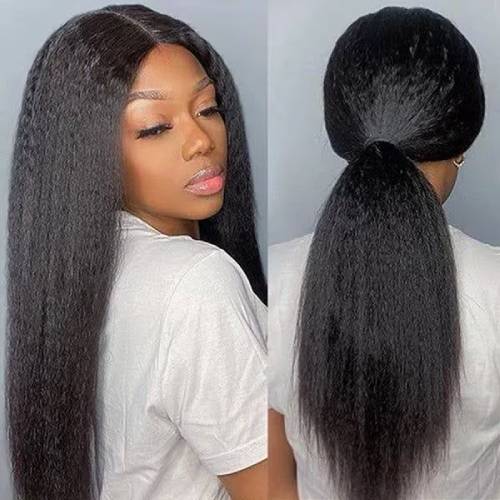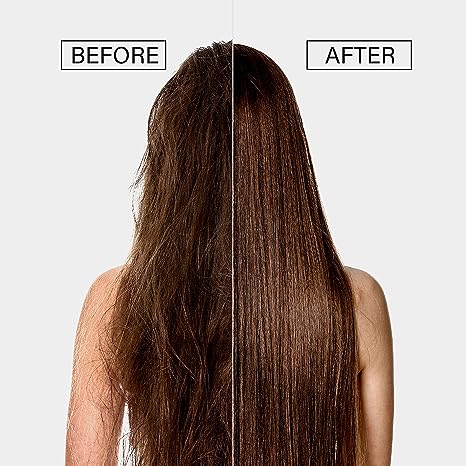How Do You Keep Your Wig From Tangling?
Last updated Nov.14,2023
Once you've found an excellent wig, you definitely don't want it to tangle. Are you curious about why wigs tend to tangle easily and what methods can keep them knot-free? In today's blog post, I'll answer these questions for you one by one. Keep reading, and you'll surely benefit greatly.

Why Your Wig Tangles?
Your Wig Is Cheaper
A synthetic wig is cheap than a human hair wig, but it is more likely to get tangled. Synthetic wigs are often more sensitive to static charges, which may cause hair strands to attract each other and form tangles more easily. Human hair wigs made of 100% virgin hair, no chemically treated and cutting straight from one donor are the best quality and difficult to tangling with proper care.
All in all, the cheaper your wig, the easily it get tangled.

You Have Wrong Wig Care Habits
Did you wash a wig with regular shampoo? After washing your wig, do you deep condition your wigs? How often do you wash and condition your wig? Do you like sleeping with a wig on? Are you a regular user of heat styling tools? Your lifestyle habits can have a big impact on whether or not your wig is prone to tangling. Keep reading, obtain useful information on proper wig care way which can help your wig free of tangles and knots, help your wig hair strands back in order.
How To Keep Your Wig From Tangling?
Comb Your Wig On a Daily Basis
This is a really useful method but need to be done everyday, especially for curly human hair wig, which is more prone to tangles. We still found some of our customers don’t know how to comb a human hair wig properly. Unlike brush your natural hair, combing your human hair wig need more care and patience.
Comb your wig from the ends, and work your way up. If your wig is tangling, we recommend part your wig into some small sections, comb each section one by one until all the knots detangled.
Don't forget brush hair in the back of your neck, which is easily tangles and often overlooked.
What's more, choose a right tool is also important. Regular hair brushes is not suitable for a wig, purchasing a comb especially for wigs is necessary. For a curly texture wig, a wide toothed comb is great.
Regularly combing your wig will eliminate any small knots that may develop and the possibility of small knots becoming large and messy ones.
Sleep With a Silk Bonnet
Did you know that a large part of the reason your wig gets tangled is because of friction, and sleeping with your wig on is the most likely behavior to cause it to get tangled. This is because cotton pillows and covers tend to rub against your hair. If possible, changing your bedding to silk can effectively reduce friction, but it's a big expense and silk products are expensive. And not all wigs allow us to effortlessly put them on and take them off every day, as wear go wigs do. So if you're wearing a lace wig, we recommend putting hair up in a bun and wearing a silk bonnet after detangling to your wig before bed.
Using Leave-in Conditioner, Detangler, Moisturizer
All these products is great for wig care and daily use. Just spray on your wig then gently comb through the wig using your fingers or a big tooth comb. It will help your wig moisturize, revive, reduce frizz, detangle hair for easy combing. When purchase these wig care spray products, keep an eye out for whether these products are designed for human hair wigs or synthetic wig.

Minimize Heat Styling
Heat styling tools are not friendly to wigs, even though a human hair wig. Heat may make the fibers of the wig weaker and prone to tangling. Frequent heat styling can also weaken the wig's texture and increase the risk of tangles. But there are always times in life when you have to need a heat styling tool to curl or straighten a wig, in which case it is recommended to use a heat styling protectant before heat styling, and to choose the right temperature and time for heat styling, to avoid overheating and overdoing it.
Properly Washing And Deep Conditioning Your Wig
Start by purchasing shampoo and conditioner especially for human hair wig or synthetic wig. Using regular shampoo on wigs is not recommended because these shampoos often contain ingredients like sulfates and parabens that can potentially damage the wig. These substances may cause the wig to become dry, frizzy, brittle, prone to shedding, and more susceptible to tangling.
The frequency of hair washing varies from person to person. If you sweat often or frequently wear wigs, you'll need to wash your hair more frequently. Over time, wigs accumulate residue from styling products, sweat, and environmental factors. Washing helps remove this build-up, which contributes to tangling.
Before washing, detangling your wig. Never comb a wig when it is still wet, it may cause wig shedding. If you want to learn about the proper wig washing method, we have another blog on how to wash a human hair wig. This article is a step-by-step tutorial, providing a detailed guide on how to properly wash and deep condition a human hair wigs, offering some daily wig care tips.
Regularly washing a wig is not enough; it also requires deep conditioning to make the wig softer and smoother. Washing the wig can sometimes cause it to become dry, hence the need for deep conditioning to help replenish moisture.
Final Words
The methods introduced above have been tried and tested to be effective. If one day your wig becomes tangled, you can try the following methods in the hope that they will be helpful to you.
You might want to check these posts:
How To Make Human Hair Wig Silky Again| 8 Effective Methods
Wig Length Chart-How To Choose Your Wig Length



 ×
×
